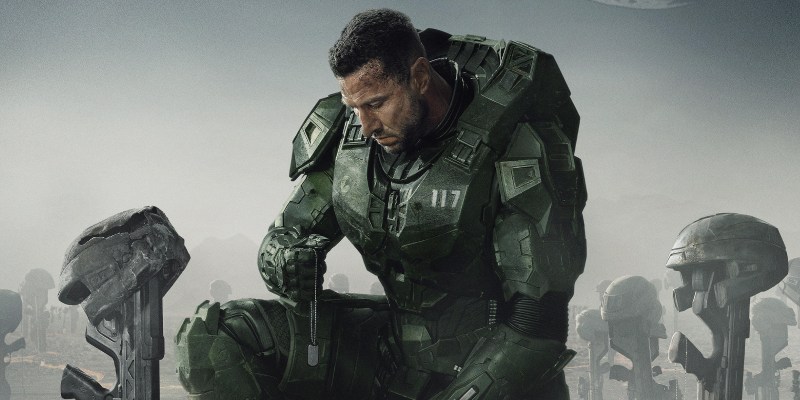Two years after Paramount+ dropped Halo Season 1, the streaming platform is back with Season 2. But should you bother reporting for duty?
That depends. If you loathed original showrunners Kyle Killen and Steven Kane take on the Halo video game franchise in the first season, chances are you’ll dislike what their replacement, David Wiener, has cooked up for the second. Halo Season 2 is, in many ways, more of the same.
However, if (like me) you thought Halo Season 1 was – a few major missteps aside – a solid enough start to the series, then you’ll be even happier this time around. Based on the four episodes available for review, Halo Season 2 delivers a far more satisfying second campaign for Pablo Schreiber’s Master Chief.
A lot of this is down to Season 2’s improved focus. As the show’s marketing materials are difficult to decipher, Halo‘s latest batch of episodes is essentially a retelling of the Fall of Reach. By using this epic event as their narrative North Star, Wiener and his team largely avoid the aimlessness that often plagued Season 1.
What’s more, the Master Chief is now a more dominant presence – a welcome change, considering Schreiber remains the show’s rock. He’s as compelling as ever here, bringing surprising depth to Halo‘s gruff protagonist. As realized by Schreiber, the Chief’s barely contained inner turmoil is a major reason to keep tuning in (even if purists will again lament how much screen time he spends unmasked).
Indeed, the further we get from the Master Chief’s orbit, the less engaging Halo Season 2 becomes. The mystery around what the Covenant is up to is gripping, as is the related subplot involving Catherine Halsey (Natascha McElhone) and effective new foil James Ackerson (Joseph Morgan). The more tangential stuff involving pirate Soren-066 (Bokeem Woodbine) and Kwan Ha (Yerin Ha)? Not so much.
But then, that’s the challenge of adapting an iconic property. Halo Season 2 shouldn’t (and can’t) just recreate the games or tie-in media blow-by-blow. It has to expand or even alter the mythology to suit a live-action streaming series. Otherwise, what’s the point? At the same time, with each addition or revision to Halo lore, Weiner and his writers risk making the show feel less like its source material.
Related: Halo Infinite Season 5 Gameplay Trailer Reveals New Maps, Flood Customization
And some of Halo Season 2 does feel a bit off-brand. It’s not bad per se; it’s just not Halo. Yet when the second season gets it right – the urban firefight sequences on Reach, for instance – it feels very much true to the spirit of the franchise. Action scenes such as these are dazzling in both their staging and execution.
The same goes for Halo Season 2’s visual effects, which are impressive, if uneven. Sure, astute viewers will clock the ways the production cuts corners, such as plasma bolts fired from off-screen rather than on-screen by costly all-CGI Covenant forces. But given its budget has to cover eight installments, Halo Season 2 does well to (mostly) hit a blockbuster movie-level aesthetic.

More importantly, it’s thematically on-point. A lot of the big ideas from the games – camaraderie, courage in the face of overwhelming odds, and even faith – get a run in Halo Season 2. This, more than anything, makes the second season feel more innately “Halo” than its predecessor, which frequently felt like a separate sci-fi IP the Master Chief happened to show up in.
Will it be enough to convert jaded diehards to enlist for Halo‘s second season? Probably not. But it should convince everyone else to join the fight.
Halo Season 2 premieres on Paramount+ on Feb. 8, 2024.
